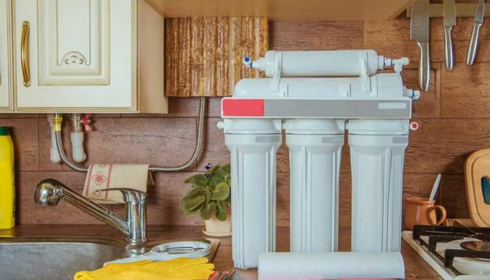It’s one of those little things you don’t always notice—until you do. You fill up a glass at the sink, maybe for a cold drink after a long walk or to splash into your favorite recipe. And something’s… off. A taste, a smell, or maybe it’s the cloudy look that just doesn’t sit right. Welcome to the not-so-secret struggle of tap water in Washington. Especially if you live in Kingston.
Now, Kingston isn’t exactly known for bad water, but if you’ve spent any time here, you know the quality can vary—well to well, house to house, even street to street. Whether you’re on municipal water or pulling from a private well, you’re probably not getting water that’s as pure as it could be.
That’s why so many locals are investing in a Kingston reverse osmosis unit—a compact, under-the-sink system that turns questionable tap water into crisp, crystal-clear, truly clean hydration.
Let’s break it down. What is reverse osmosis? Why is it different? And how do you know which system is right for you?
Reverse Osmosis: The Water Clean-Up Crew
You’ve heard the term. Maybe even seen it on bottled water labels. But what does reverse osmosis actually do?
In a nutshell, reverse osmosis (RO) is a filtration process that forces water through a semi-permeable membrane—small enough to block particles, bacteria, and dissolved solids, while allowing only pure H2O to pass through.
We’re not just talking about dirt or sediment here. RO systems can remove:
- Chlorine and chloramine
- Lead, arsenic, and mercury
- Fluoride and nitrates
- PFAS (aka “forever chemicals”)
- And even some bacteria and viruses
So yeah, it’s more than just “filtering.” It’s purification. Think of it like turning your water into a clean slate.
Why Kingston Needs Better Water Filtration
Let’s be real—Kingston, WA is a beautiful place. But when it comes to water, it’s not exactly flawless. Some homes pull from iron-rich wells, others are connected to treated municipal supplies that carry chlorine or other chemical residues. And don’t even get us started on sediment buildup in older plumbing systems.
If you’re noticing off-tastes, murky glasses, or buildup in your kettle or coffee maker, chances are your water could benefit from more than a basic filter.
That’s where reverse osmosis shines. It’s a true game-changer for anyone chasing filtered drinking water WA residents can actually feel good about.
Under-Sink Simplicity, Long-Term Peace of Mind
One of the reasons reverse osmosis units are so popular now—especially in Kingston—is how compact and low-maintenance they’ve become. The typical RO setup fits under your kitchen sink, with a small dedicated faucet for dispensing water. That’s it.
It doesn’t take up counter space. It doesn’t require daily refilling. And once it’s installed, it pretty much runs itself—with filter changes every six to twelve months, depending on usage.
For busy families, remote workers, retirees, or anyone tired of buying bottled water every week, the convenience alone is worth the price of admission.
So, What’s the Catch?
Honestly? Not much. But there are a few things to consider:
- Water pressure matters. RO systems perform best with decent water pressure. If your home’s pressure is low, you might need a booster pump.
- Wasted water. Traditional RO systems can produce a bit of wastewater during filtration (though newer models are much more efficient).
- Mineral content. Because RO removes nearly everything—including beneficial minerals like calcium and magnesium—some systems now include a remineralization stage to add those back in for taste and balance.
Bottom line: the pros heavily outweigh the cons, especially with modern technology and proper setup.
Choosing the Right RO System for Your Home
So what are the best RO systems for Kingston homeowners? Good question.
There’s no universal answer, because it depends on your water quality, your home’s plumbing, and your budget. That said, here’s what to look for:
- NSF certification. This ensures the system actually removes what it claims to.
- Multi-stage filtration. Most good RO systems use at least 4–5 stages (sediment, carbon block, membrane, post-carbon, and sometimes remineralization).
- Local support. If possible, buy from a local supplier who understands Kingston’s water challenges and can offer installation or service.
- Tankless vs. tanked. Tankless systems are sleek and fast, while tanked systems store water for instant use—both have pros and cons.
And always ask for a water test first. Knowing what’s actually in your water will help you choose a system that fits like a glove—not one that just sounds good on paper.
Final Thoughts: A Simple Shift with a Big Impact
Installing a Kingston reverse osmosis unit isn’t about making a fancy upgrade. It’s about feeling good every time you turn on your kitchen faucet. It’s about ditching bottled water for good, cooking with confidence, and maybe even drinking more water just because it finally tastes that good.
Whether you’re a parent trying to protect your kids from questionable contaminants, a tea-lover chasing the perfect cup, or just someone tired of cloudy water and filter pitchers that never seem to last—you deserve better.
And now? You can have it. One small system, tucked under your sink, delivering fresh, clean water every single day. That’s the power of RO. And once you make the switch, there’s no going back.

